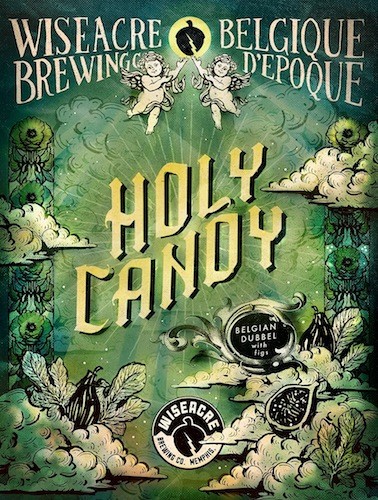Last week, Richard Murff, who shares this column space with me, bemoaned the pumpkin-flavored beer trend. I’m right there with him. I also urge him to step back into the beer cooler and reach for a can or a growler of Wiseacre’s Holy Candy. It’s flavored with figs, not pumpkins — 400 pounds of figs in fact, according to Wiseacre brewmaster Davin Bartosch, a native Memphian who runs the Broad Avenue brewery with his brother Kellan.
“When I was brewing in Chicago,” Bartosch says of his time at Rock Bottom Brewery, “I made a beer called Drunken Angel, which was a Belgian dubbel made with raisins.”
Belgian dubbel refers to a rich, malty style of beer that tastes mild with slight hints of spice and caramel flavors. The brew originally hails from a Trappist monastery in Antwerp, Belgium, where it gained fame in the 1850s. After World War II, the dubbel gained international fame. It skyrocketed in the 1980s with the introduction of Chimay Première (Red), a Trappist brand that’s still brewed by monks at the Notre-Dame de Scourmont Abbey.
The Belgian dubbel is a fantastic addition to the fall palate — despite the current heat wave. I’ve drunk it with a few seasonal menu items, including sausages and stinky cheese. Holy Candy goes down superbly well with fall greens like Swiss chard, or with rich, aged cheeses like a triple-cream Brillat-Savarin, which comes from Normandy, just down the coast from Antwerp. Or, if you’re counting calories but still want to enjoy a beer, try pairing a glass with a kale, cranberry, and pecan salad. Drunken Angel netted a bronze medal at the 2009 Great American Beer Festival, yet after returning to Memphis in early 2013, Bartosch decided to retool the recipe. “The raisins,” he says, “made the beer taste iron-y — not that it had irony, but that it had a metallic flavor.” Figs mellowed the taste, and in fall 2013, Holy Candy was born.

Traditionally, Belgian dubbels are made with dark candy sugar, which is slightly burnt. Using figs adds flavor, according to Bartosch, without making the beer itself taste overtly sweet.
“What I try to tell people who get kind of freaked out thinking it’s a sweet beer is that it smells sweet, but it’s actually a very dry beer,” he says. “As part of the brewing process, we always measure the sugar content of the liquid, and this one finishes with less sugar than most of the beers we make.”
Bartosch describes the brewing process for Holy Candy as “remarkably simple.”
“First,” he says, “we make the beer: Once the beer is in the tank with the yeast, we just dump a bunch of fruit in the tank, and the yeast eats those sugars, as well. Yeast needs nutrition from the grain, so we start there and add the fruit later.”
As anyone who has cooked with figs before knows, the sticky fruit can leave behind a mess. Yet in the brewing tanks, the beer rises to the top, leaving the solids at the bottom. “When we’re done, we pressurize the whole tank and blow everything out of the bottom that is solid,” Bartosch explains. “The figs end up getting fed to cows, which are fed just about every oddball agricultural project we have, with the exception being coffee we’ve used to brew our coffee beer.”
In August, Wiseacre put out a call for local figs in exchange for coupons for the finished beer. Bartosch estimates that at least a dozen people brought in a pound to five pounds apiece; most were of the Calimyrna variety. A few hundred pounds of Black Mission figs were shipped in from California to fulfill the recipe. This year’s batch of Holy Candy was brewed in September and hit the streets in mid-October. Bartosch expects that growlers and cans will be available until the end of the year. Holy Candy is hardly the only fruit- or vegetable-flavored beer brewed at Wiseacre. Bartosch has also “messed around” with passionfruit, berries, and fresh corn. Holy Candy is also not the only fig-flavored beer on the market: Other craft varieties which occasionally show up in Memphis coolers include the Fig Lebowski, a “winter warmer” brewed by Short’s Brewing Company in Bellaire, Michigan.

